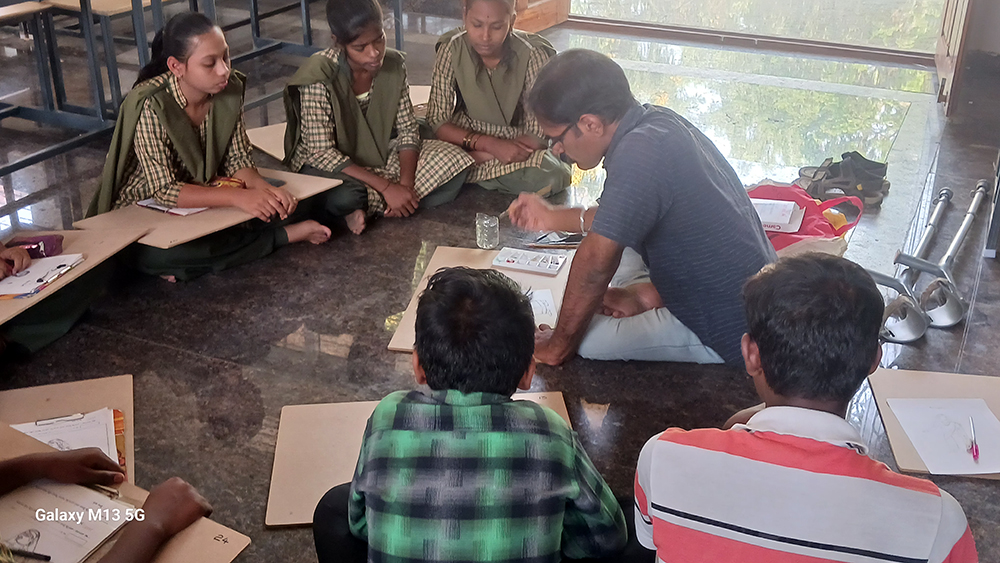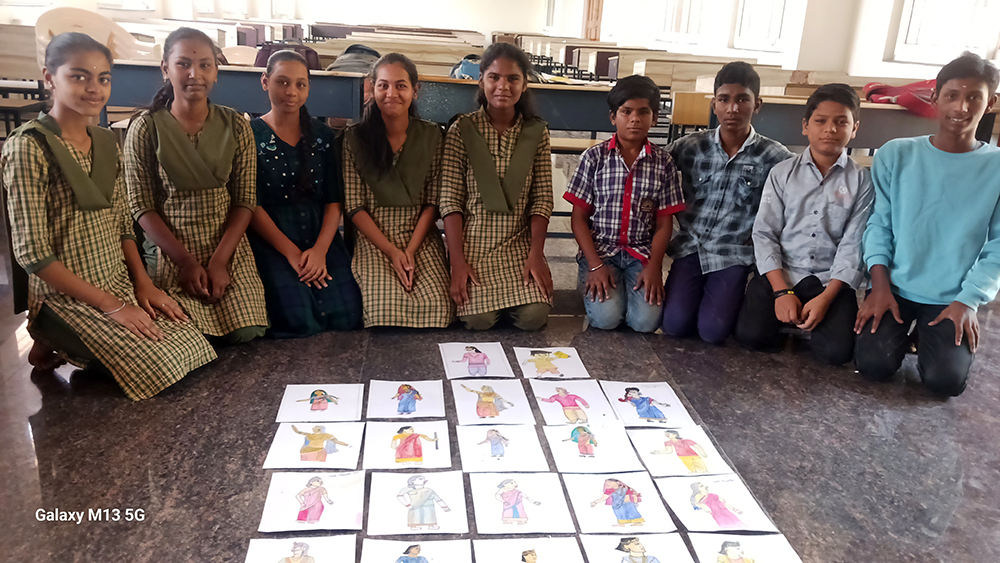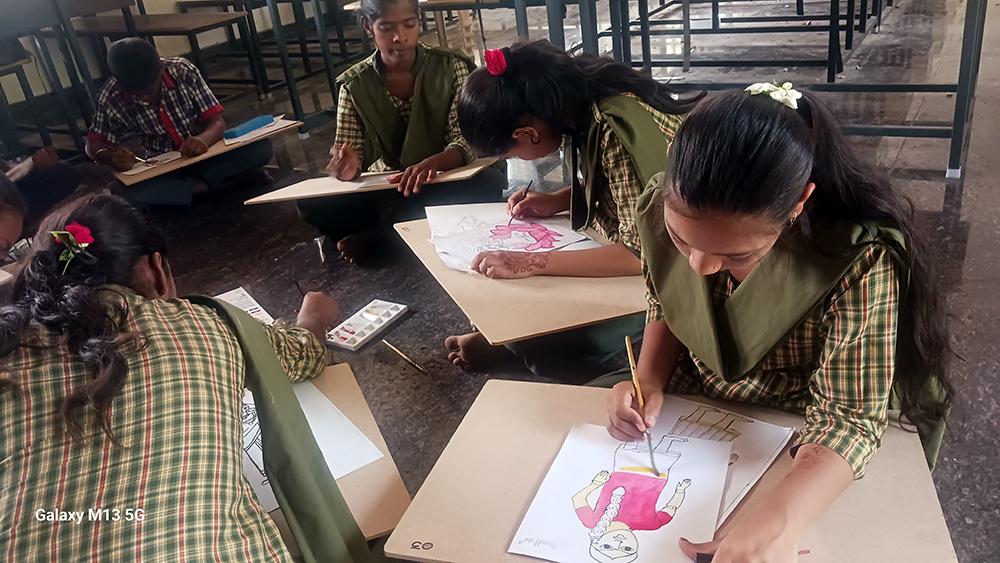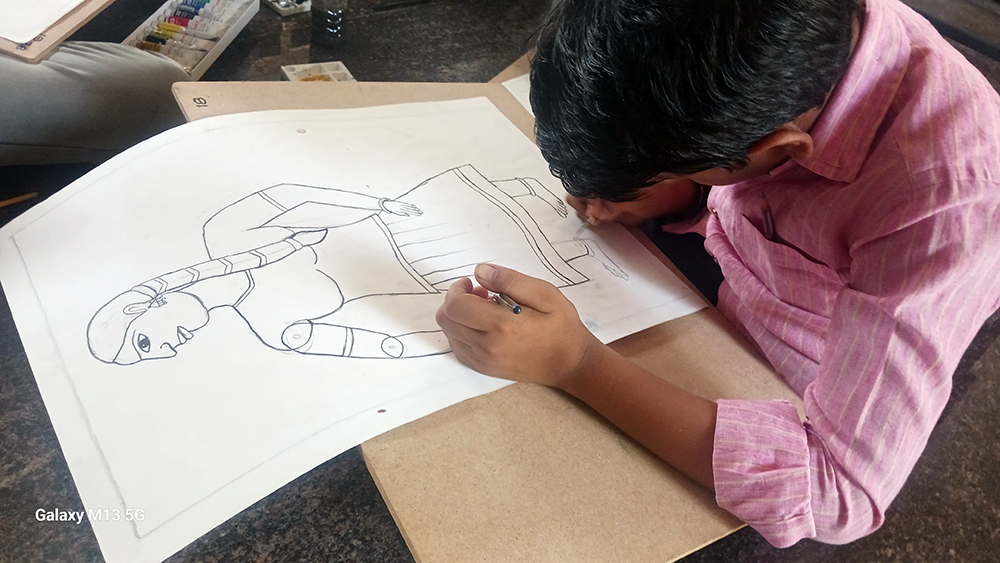Mallikarjun Veeranna Koralli




Project Period: One year and three months
This Foundation Project implemented by IFA will engage eighth grade students of the Government Public School in Kalaburagi, Kalaburagi district, in making an illustrated book titled Makkala Gombe Rama (A Children’s Puppetry Picture Book) using the leather puppetry style of painting. The project aims to develop imaginative and artistic skills among students through the exploration of drawings and its applications to their language and social science curriculum. Mallikarjun Veeranna Koralli is the Coordinator for this project.
Mallikarjun Veeranna Koralli is a Visual Arts Teacher from Kalaburagi, Kalaburagi district. He has a Masters in Visual Arts from Kalaburagi University. Given his experience he is best placed to be the Coordinator of this Foundation Project of IFA.
One of the earliest shadow puppet traditions in India is that of leather puppetry from Andhra Pradesh. It serves as a platform for entertainment, the dissemination of folklore, and the exchange of knowledge and information. The origin of this art form known as Tholu Bommalata can be traced to Nimmalakunta in the Anantapur district. In Telugu “Tholu” means “leather” and “bommalu” means “dolls”. The narratives and music of Tholu Bommalata often draw from historical events and epics. With the advent of television and cinema, leather puppetry is on the decline and puppeteers are diversifying into the production of miniature puppets, lampshades and other utility items. It is anticipated that through this project, students will once again be reminded of their artistic roots.
The main objective of this project is to enable children to visualise three Kannada poems and three history lessons in the art of Andhra leather puppetry style of painting. Through this experience, students will be able to gain an appreciation of the significance, value and process that goes behind the leather puppetry craft practices.
With an objective to facilitate reflection and dialogue with the children, the Project Coordinator plans a series of visual arts activities. He will invite history and Kannada subject teachers, and puppeteers to conduct workshops for students to illustrate texts into visuals. Apart from briefly enlightening children about the elaborate process of making leather puppets, the Project Coordinator will encourage them to create their own colourful characters through painting and illustration. This learning will involve using paper, cardboard, fiber sheet, and gelatin paper to cut puppet shaped characters related to the subject of the lesson.
The project encompasses a wide range of practical exercises in developing the children’s power of reflection, thoughts, drawing, composition and technical skills. Efforts will be put in to facilitate and enrich their visual sensibilities, which in turn would help them improve their concentration and build a new vocabulary for expression. The students will also have an opportunity for a few museum visits scheduled through the year.
The outcomes of the project will be an exhibition, performance and a publication. The Project Coordinator’s deliverables to IFA with the final report will be the publication and photographs and video documentation of the entire project including the exhibition.
This project suitably addresses the framework of the Arts Education programme at IFA in the manner in which it attempts to connect students and schools to the cultural knowledge of the local communities they live in.
IFA will ensure that the implementation of this project happens in a timely manner and funds expended are accounted for. IFA will also review the progress of the project at midterm and document it through an Implementation Memorandum. After the project is finished and all deliverables are submitted, IFA will put together a Final Evaluation to share with Trustees.
